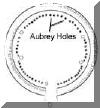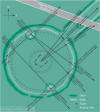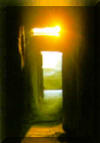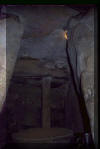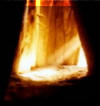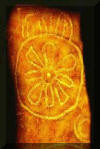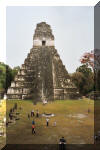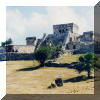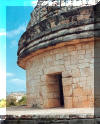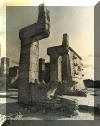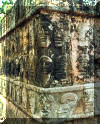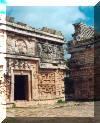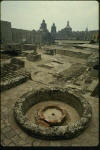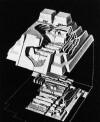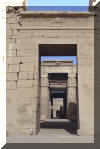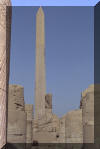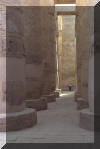|
I) Ancient Astronomy A) In the beginning, there were 3 basic types of ancient observatories 1) Simple markers 2) Circles (a) Stone, wood, holes, or lines 3) Temples or tombs (a) Passageways, shafts, windows, or other openings that would face the rising/setting moon, sun or important stars II) Famous Places A) Stonehenge 1) Located on the Salisbury Plain in Southern England 2) One of about 900 megalithic circles throughout Britain 3) Consists of three concentric circles built during three different time periods 4) Built in stages from about 2800 BCE to about 1075 BCE 5) Used to observe the sun and the moon 6) Gave regularity to the builders calendar; helped in planting and used for religious ceremonies 7) The largest stones weigh 50 tons, and were transported from many miles away. 8) Viewed from the center, the sun rises over the heel stone at the summer solstice
Period 1 - 2 Period 3 Alignments of Stonehenge Heel Stone Around 3000 BCE, the first Stonehenge consisted of a ditch and bank enclosing a ring of 56 pits. These were later named Aubrey Holes after the 17th century antiquarian John Aubrey who discovered them. Around 2500 BCE, the 4 ton bluestone megaliths were brought from the Preseli mountains in Wales. Around 2300 BCE, 30 sarsens (sandstone uprights), each weighing over 25 tons, were positioned in a circle and capped with morticed stone lintels. Seven centuries later two mysterious rings of pits were dug around the Stones. Over time, the landscape around Stonehenge underwent substantial change and development. In the Neolithic period long barrows and huge earthworks such as the Cursus and Durrington Walls were created. During the Bronze Age hundreds of round barrows were built for the burial of chieftains or leaders, often with supplies to support them on their journey into the next world. The Avenue, a ceremonial approach to the Stones aligned on the midsummer sunrise, was also built around this period. What really happens at Stonehenge!
B) Newgrange (Ireland) - check www.knowth.com for a fascinating detailed description of this ancient site. 1) 3000 BCE 2) Underground chamber (tomb?) with passageways which point to the rising sun at winter solstice 3) Window allows light to enter at sunrise on the first day of winter 4) Built by a sophisticated society with an interest in tracking and recording the movements of the sun 5) Originally used as calendar (a) Used to mark major events in the sun’s yearly and four-yearly cycle 6) Change in climatic conditions and a change in the obliquity of the ecliptic of Earth’s passage led to disuse 7) Ornamentations found in Newgrange have a functional purpose (a) As the sun shines directly onto the symbols engraved on the backstone they act not just as primitive representations of the sun, but as devices precisely positioned to measure solar movement
Pictures & Text are © www.knowth.com The Megalithic Passage Tomb at Newgrange was built about 3200 BCE. The outer kidney shaped mound covers an area of over one acre and is surrounded by 97 Kerbstones, many of which are decorated. The 19 meter long inner passage leads to a cruciform chamber. It is estimated that the construction of the Passage Tomb at Newgrange would have taken a work force of 300 at least 20 years to build. The passage and chamber of Newgrange are illuminated by the Winter Solstice sun. A shaft of sunlight shines through the roof box over the entrance and penetrates the passage to light up the chamber. The dramatic event lasts for 17 minutes at dawn from the 19th to the 23rd of December. The Passage Tomb at Newgrange was re-discovered in 1699 by the removal of material for road building. The pictures below show the entrance and a small window directly above. Around December 21st, the sun shines through this window illuminating the complete passage along with an ornamentation carved on a back stone that precisely measures solar movement for 15 minutes.
C) Big Horn Medicine Wheel 1) Arrangement of rocks resembling a 28-spoke wheel in the Big Horn Mountains of Wyoming; 90 feet in diameter 2) Used as calendar by the Plains Indians from about 1500 – 1700 CE 3) Used as indicator of summer solstice sunrise and sunset, with other alignments for the rising of certain stars (Aldebaran, Rigel, and Sirius) 4) About 50 similar circles exist (a) The oldest is in Canada (b) About 2500 BCE - the age of the Egyptian pyramids 5) The alignments are controversial as they could be due to chance 6) No evidence they are astronomical in design (a) Why were they interested in those three particular stars?
Locations of Medicine Wheels throughout the Northwest and Canada The Big Horn Medicine Wheel is a prehistoric Native American rock structure laid down about 2,500 years ago by an Aztec-Tanoan culture that occupied the infamous Bighorn Canyon and adjacent areas between 1500 BCE and 500 CE. The Wheel lies at an elevation of 9,642 feet, 11 miles south of the Montana Boundary. Medicine Wheel was first discovered by Crow Indian hunters nearly 300 years ago. They became deathly afraid of its "bad medicine" and no Indians of any tribe dared go near it after the news had spread across the Plains. Because of the structure's resemblance to a giant wagon wheel with hub, spokes, and a rim, white trappers called it a wheel. Until 1992 its true interpretation was unknown, although many theories were advanced without real study. As an archeolinguistic artifact, the Medicine Wheel tells how the first people on earth, (Uto-Aztecan) emerged as spirits out of the Underworld via a conduit topped by the large central rock cairn, to be driven by a spirit vectored force into an inwardly opening rim-touching cairn where they became born as human beings. Where an offset cairn lies 12 feet outside the Wheel's rim, the greatly feared evil ghosts of dead Uto-Aztecans were uplifted into the Afterworld in the Milky Way directly above the structure's central exit cairn. The rim of the structure symbolized the cosmological horizon of the Milky Way. Four external rim-touching cairns symbolize the four preceding eras in the world's history closed completely in time; they could not be entered by either the spirits rising from the Underworld nor by the ghosts en route to the Afterworld. On the inside a rim-touching, larger cairn opens toward the central cairn via a spoked channel to symbolize the Fifth Era of Current Existence in which all humanity plays its varied parts. In this era the Underworld spirits become human beings living a normal life span. The Wheels' rim measures 245 feet. There are 20 aboriginal "spokes" that connect the rim only to the central cairn in five groups of four spokes each. These symbolize the number of days in the Uto-Aztecan month and their counting system to the base 20 (fingers and toes). Another seven spokes connect the central cairn to the other rim-touching elements. The total of 27 aboriginal spokes symbolized the number of nights between the New Moon crescent and the Old Moon crescent when the moon is actually visible each month. This lunar visibility symbolized the forces of darkness, evil. On the central cairn lies a bison skull that symbolizes the sun (light), beneficence or goodness. These two symbolizations represent the eternal warfare between light and dark, i.e., evil vs. good. All across Wyoming, with radii up to 200 miles, giant stone arrows direct the way to the Medicine Wheel to show the greatly feared evil ghosts of Uto-Aztecan dead the way to the Afterworld of Darkness. Thus the Medicine Wheel was also a mythological cemetery for ghosts, a place of great fear to be avoided forever and a place totally lacking in religious sentiments. The Aztec-Tanoan culture originated around 4,500 years ago in Southern Alberta, Canada, where the Majorville Cairn is the oldest wheel-like cosmological rock structure belonging to the Medicine Wheel Complex. A second and follow-on structure based on five is the Moose Mountain Cairn in Southern Saskatchewan and dates to around 3,000 years ago. Third in the order is the Big Horn Medicine Wheel at 2,500 years of age. The fourth and final rock symbolization appears to be the famed Aztec Calendar Stone located in Mexico City which has been dated to 1481 CE. All of these four structured linguistic artifacts (none are archaeological remnants of prehistory) symbolize a mythological story of the creation of Uto-Aztecan humanity -- the "Origin Myth" of which every tribe on earth has its own version -- and the disposition of the ghosts of Uto-Aztecan dead in an Afterworld of Darkness located in the cosmological horizon of the Milky Way. The cosmology patterned into these four rock structures is common only to Native American tribal groups speaking branches of the Uto-Aztecan (Numic) language. No other Western Hemisphere tribe or society entertained this particular view of man's place in the cosmos of the earth exactly half way between the Underworld of his mythological creation and the Afterworld high above. The Big Horn Medicine Wheel (as also its Canadian predecessors and its Aztec successor) is a linguistic artifact that reflects the "thought world" of a very ancient primitive Siberian people immersed also in the eternal warfare between the forces of darkness (evil) and the forces of light (good), i.e., originating as between the bitter darkness of arctic winters vs. the perpetual daylight of warm summers. This never-ending warfare is clearly portrayed in the Medicine Wheel Complex rock patterns and exists today in the legends of many of the Numic-speaking tribes between Southern Canada and Central America. All of these prehistoric rock structures are based in the mystical number five, which meant power. All other Western Hemisphere Native Americans revered the number four of the cardinal directions North, South, East, and West. None of the Medicine Wheel Complex structures bear the slightest relationship to the number four, and for this reason their entire interpretation must be in terms of the Uto-Aztecan "thought world" stock language. No religion whatsoever connects to the Medicine Wheel. Since the Bighorn Medicine Wheel was first discovered by white men, many fanciful myths and stories have grown up around the mysterious arrangements of its limestone rocks, however, none have any scientific validity. Contemporary Native American claims of "religious rights" to the site because of "traditional ceremonial usages" did not surface until 1985 with the American Indian Movement. All such "claims" are patently false and unrelated in any way to the Wheel's paleoethnological time span of 2,500 years. There is no recorded evidence of any twentieth century Native American of any tribe visiting the Big Horn Medicine Wheel prior to 1985.
D) Mayan Ruins - Caracol Temple 1) Yucatan Peninsula, Mexico 2) 1000 CE 3) Solstice and equinox alignments 4) Star alignments 5) Alignments with Venus Mayan Astronomy The Maya were quite accomplished astronomers. Their primary interest, in contrast to "western" astronomers, were Zenial Passages when the Sun crossed over the Maya latitudes. On an annual basis the sun travels to its summer solstice point, or the latitude of 23-1/3 degrees north. Most of the Maya cities were located south of this latitude, meaning that they could observe the sun directly overhead during the time that the sun was passing over their latitude. This happened twice a year, evenly spaced around the day of solstice. The Maya could easily determine these dates, because at local noon, they cast no shadow. Zenial passage observations are possible only in the Tropics and were quite unknown to the Spanish conquistadors who descended upon the Yucatan peninsula in the 16th century. The Maya had a god to represent this position of the Sun called the Diving God. The Maya believed the Earth was flat with four corners. Each corner represented a cardinal direction and each direction had a color: east-red; north-white; west-black; south-yellow. Green was the center. At each corner, there was a jaguar of a different color that supported the sky. The jaguars were called bacabs. These bacabs, held up the sky. The Milky Way itself was much venerated by the Maya. They called it the World Tree, which was represented by a tall and majestic flowering tree, the Ceiba. The Milky Way was also called the Wakah Chan. Wak means "Six" or "Erect". Chan or K'an means "Four", "Serpent" or "Sky". The World Tree was erect when the constellation Sagittarius was well over the horizon. At this time the Milky Way rose up from the horizon and climbed overhead into the North. The star clouds that form the Milky Way were seen as the tree of life where all life came from. Mayans further believed the universe was divided into thirteen layers, each with its own god. The Maya portrayed the Ecliptic in their artwork as a Double-Headed Serpent. As you know, the ecliptic is the path of the sun in the sky which is marked by the constellations of fixed stars. Here the moon and the planets can be found because they are bound, like the Earth, to the sun. The constellations on the ecliptic are also called the zodiac. We don't know exactly how fixed constellations on the ecliptic were seen by the Maya, but we have some idea of the order in some parts of the sky. We know there is a scorpion, which is the same as the constellation of Scorpius. It has also been determined that Gemini appeared to the Maya as a pig or peccary, (a nocturnal animal in the pig family.) Some other constellations on the ecliptic are identified as a jaguar, at least one serpent, a bat, a turtle, a xoc monster (shark or sea monster.) The Pleiades were seen as the tail of the rattlesnake and is called, "Tz'ab." Mayan Ruins Caracol Temple Caracol Alignments The Maya built observatories at many of their cities and aligned important structures with the movements of celestial bodies. Some of these are temple groupings, such as a group of three at Uaxactún, which marks the Sun's rising position at summer solstice, the two equinoxes and winter solstice. Architecture such as the Caracol Temple was also aligned with the appearance of celestial bodies such as the Pleiades and Venus.
E) Nabta 1) West of the Nile River in southern Egypt 2) Radiocarbon dating dates Nabta could not be younger than 4,800 years old (a) Megaliths at Nabta predate most other similar sites, such as Stonehenge In Nabta, there are six megalithic alignments extending across the sediments containing a total of 24 megaliths or megalithic scatters. Like the spokes on a wheel, each alignment radiates outward from the complex structure. These lines coincide with the rising positions of three prominent stars from the period 4800-3700 BCE: Sirius (the brightest star in the night sky), Dubhe (the brightest star in Ursa Major), and stars in the belt of Orion.
F) Namoratunga 1) Astronomical Site in Sub-Saharan Africa 2) 300 BCE 3) 25 stone alignments with seven positions in the sky Built around 300 BCE by an unknown African people. They built a stone "observatory" using a detailed understanding of the motions of the Stars and the Moon. With their astronomical knowledge, these people created a very accurate lunar calendar.
G) Aztec Ruins 1) Templo Mayor in Tenochtitlan, eastern Mexico 2) Festivals occurred at the equinoxes
Aztec Astronomy The Aztecs were observers of nature in all its cycles: the stars, the passing of the seasons and the birth and death of plant and animal life. These observations informed many aspects of life: from the creation of the calendar, to the integration of time cycles with the stories of the gods and creation, to the structuring of rituals in their proper time and place. More unpredictable astronomical events were linked to omens and portents. For example, the comet seen by Montezuma prior to the Spaniards' arrival was seen as a forewarning of an impending crisis. There were two calendar systems used by the Aztecs. The first was the solar year, or the 365 day cycle. This was divided up into 18 months of 20 days each. There were 5 leftover days (called "nemontemi" which were deemed to be bad luck. The second calendar was a 260 day cycle made up of 20 day signs (named mostly after aspects of nature) and 13 numbers. These two cycles worked together like two intermeshing gears. After the gears of the 260 and 365 day cycles have gone completely around, 52 years (the equivalent of our century) will have passed. Astronomically, this 52 year cycle was begun when the Pleiades crossed the fifth cardinal point or the zenith of heaven at midnight. The ritual that marked this new cycle was called the "New Fire Ceremony", which was probably a once in a lifetime event for most Aztec people. On this evening, priests and a warrior chosen by the King began their 20 kilometer procession to the Hill of the Star. At the proper moment of alignment in the heavens, wood bundles representing the past 52 year cycle were lit, the heart sacrifice of the warrior was enacted and the "new fire" built on his chest. Watching from afar, the citizens also cut and bled themselves and celebrated as the fire was brought back to the Great Temple at Tenochtitlan. Priests and emissaries from outlying towns came to Tenochtitlan to fetch the fire to bring back to their people, so that all could share in the marking of the time as well as symbolically renewing ties with the capital. The universal time scale, is one of the most famous of Aztec relics: the Calendar Stone (or Sunstone). This huge object (4 feet thick, 12 feet in diameter, and weighing over 24 tons) was found in Mexico City's main square, or Zocalo, in 1790. It is believed that the stone was meant to portray the five ages or cycles of creation. At the time of the arrival of Cortes, the Aztecs were in the fifth and final age, which had started 535 years earlier. In the center of the stone is the face of the Sun God, Tonatiuh. Surrounding him are square areas representing the four previous ages which had been destroyed by hurricanes, jaguars, fires, and rains. Doomsday is marked by the pointing triangular area at the top of the stone. For the Aztecs, observations of nature provided a framework for marking temporal events in calendars. It also served to help order the time and place of the rituals that were so important to their society.
H) Incan Ruins 1) Temples (a) Worship (b) Sacrifices Incan Ruins at Machu Picchu, Peru Incan Astronomy The Incan Empire played host to a broad spectrum of divine spirits and cultural heroes that were based upon their observations of the night sky. From Viracocha, the creator god, to K'uychi, the rainbow god, the Incans viewed themselves as subjects to a menagerie of powerful deities. By controlling weather, health, fertility, and time itself, these gods held the fate of the empire in their hands. If appeased, they could be helpful allies, but if angered, they were capable of unleashing profound terror upon the masses, desiccating the fields with drought, ravaging the villages with disease, or destroying entire cities with natural disaster. Inti was considered the Sun god and the ancestor of the Incas. Inca people were living in South America in ancient Peru. In the remains of the city of Machu Picchu, it is possible to see a shadow clock which describes the course of the Sun personified by Inti. Inti and his wife Pachamama, the Earth goddess, were regarded as benevolent deities. According to an ancient Inca myth, Inti taught his son Manco Capac and his daughter Mama Ocollo the arts of civilization and sent them to Earth to instruct mankind about what they had learned. Inti ordered his children to build the Inca capital where the tupayauri fell to the ground. The tupayauri was a divine golden wedge. Manco probed the ground with the wedge, and at one point threw it into the ground. The tupayauri sank into the ground, and so the search for a site was over. Incas believed this happened in the city of Cuzco, which had been founded by the Ayar. A festival, held in honour of Inti is celebrated even today in Peru during the Festival of Inti Raimi in Cuzco, where an Inca drama related to the Sun god is re-enacted. Finally, the Inca Universe had three worlds: the Cosmos (Hanaqpacha); the surface of the earth (Kaypacha) and also the earth's interior (Okupacha.)
I) Egyptian 1) Temple at Karnak (a) Certain alignments correspond to summer solstice sunset and winter solstice sunrise 2) Pyramid of Khufu at Giza (a) Shafts from the King's chamber indicate (1) location of Polaris 5000 years ago (2) Former position of Orion's belt (b) The pyramid is also aligned perfectly N-S and E-W Temple at Karnak - Egypt Pyramid of Khufu at Giza, Egypt The Pyramids of Giza are the most famous monuments of ancient Egypt. These massive stone structures were built around 4500 years ago on a rocky desert plateau close to the River Nile. They form part of the burial complexes of the Egyptian pharaohs Khufu, Khafre and Menkaure. The intriguing Egyptian pyramids were more than just graves. The mysteries surrounding their symbolism, design and purpose have inspired passionate debate. It is likely that many of these mysteries will never be solved. The Great Pyramid of Khufu is the largest of the pyramids of ancient Egypt, and was considered by the ancient Greeks to be one of the Seven Wonders of the World. Khufu (Cheops to the Greeks) came to power when the Old Kingdom of ancient Egypt was nearing a peak of prosperity and culture. His pyramid is remarkable for both its size and its mathematical precision. The four sides of the Great Pyramid of Khufu are accurately oriented to the cardinal points of the compass. The base has sides 230 meters long, apparently with a difference between them of only a few centimeters. The pyramid was originally 146 meters high until it was robbed of its outer casing and capstone. The structure contains approximately 2.3 million stone blocks. The Great Pyramid of Khufu is regarded as the most massive building ever erected in the world - a remarkable statistic for a construction feat achieved 4500 years ago. There is some debate on whether or not the pyramid was built with an "eye on the stars." The following pictures will show you that there is a perfect alignment with the pyramids and the three stars of Orion's belt. In addition, the pyramid is perfectly aligned with North/South and East/West. A fascinating archaeological story argues that the great pyramids of Egypt's Fourth Dynasty (c. 2600-2400 BCE.) were vast astronomically sophisticated temples, rather than the pharaonic tombs depicted by conventional Egyptology. A tiny remote-controlled robot created by Rudolf Gantenbrink, a German robotics engineer, traveled up airshafts within the Great Pyramid of Giza and relayed to scientists video pictures of a hitherto unknown sealed door within the pyramid. Robert Bauval, a British engineer and writer who has been investigating the pyramids for more than ten years, and Adrian Gilbert, a British publishing consultant, use Gantenbrink's tantalizing discovery as the basis for an extended analysis of the purpose of the mysterious airshafts, which lead from the Great Pyramid's chambers to its exterior, and of the placement of other Fourth Dynasty pyramids. They were sited, the authors argue, to coincide with the key stars of Orion, a constellation that had religious significance for the Egyptians. Bauval and Gilbert claim that the shafts were pointed directly at important stars in Orion (when Orion was in position during ancient times.) Using astronomical data about stellar movement, they argue that the Orion stars coincide exactly with the pyramids' positions in approximately 10,400 BCE. This is during a period the Egyptians called the First Time, when they believed the god Osiris ruled the Earth. The authors also speculate that the mysterious space within the Great Pyramid discovered by Gantenbrink contains the mythical Benben stone, which the Egyptians linked to the creation of the world. Along with this theory, the authors also suggest that other astronomical sites through out the world all line up with constellations in the sky during the year 10,400 BCE.
J) Chinese Alignments 1) A tower built in 1270 CE 2) Measures the sun's shadow (a) Shadow shortest at noon (b) Very short at the summer solstice 3) Markers on ground locate shadow positions Chinese Astronomy Mankind's first record of an eclipse of the Sun was made in China in 2136 BCE. Zhengtong, a Ming Dynasty ruler of China from 1436-1449, had the Ancient Beijing Observatory built at the southeast corner of the city wall. A 46-ft.-high platform held eight Qing Dynasty bronze astronomical instruments. Two were built in 1439 and six in 1673. During the Dark Ages in Europe, the flourishing civilization in China achieved major advances in science, technology, medicine, mathematics and astronomy. A "guest star" was seen by the Chinese in 1054. The supernova explosion was witnessed in the area of Earth's sky where today we see an expanding gas cloud that we now call the Crab Nebula. When the star exploded, it was so bright it was visible during daylight and lasted more than a year. When contact was made with European astronomers, the Chinese realized how much they did not yet know about astronomy. |
